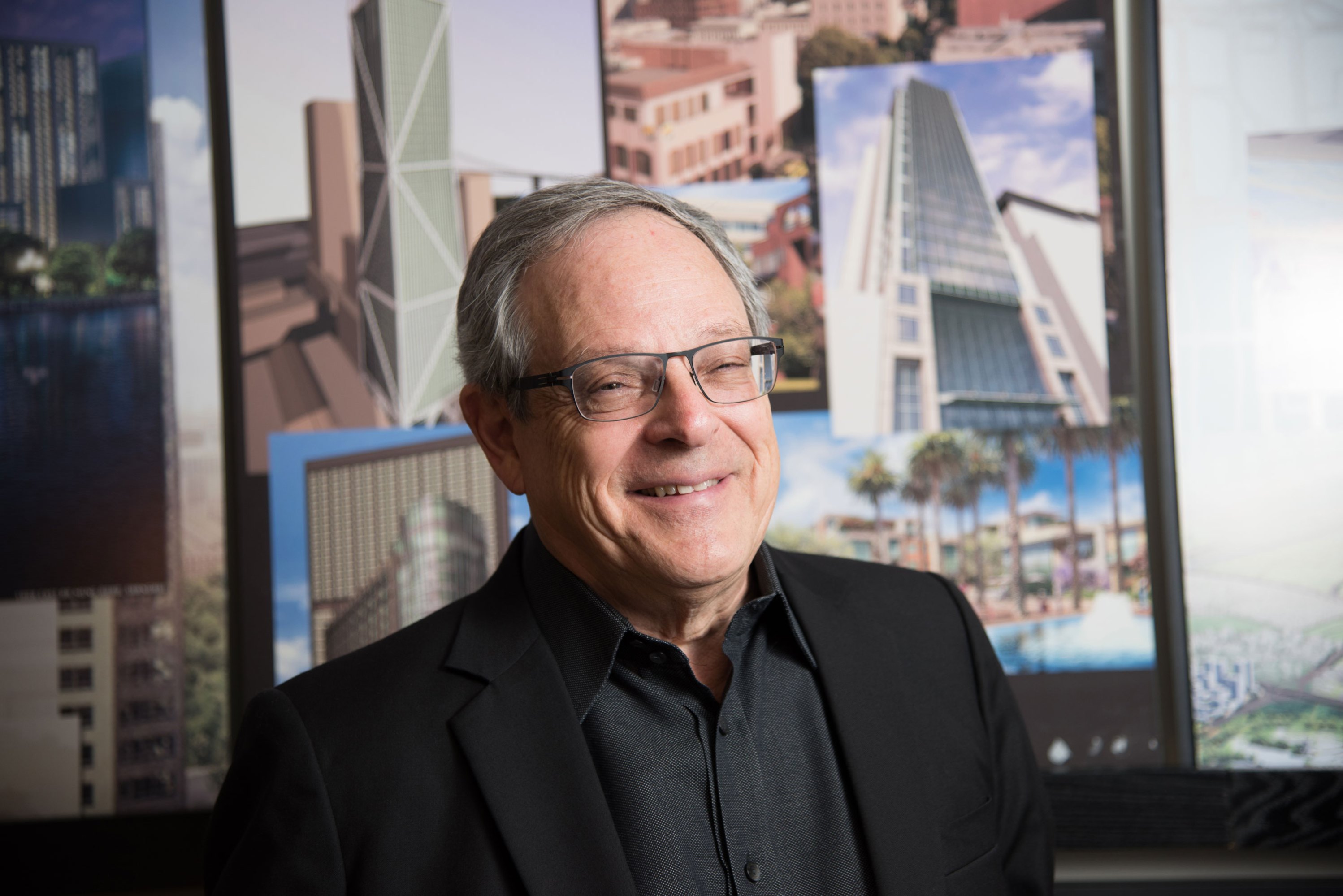When Jeffrey Heller ’64, MArch ’68, founded Heller Manus Architects in San Francisco in the mid-1980s, sustainability was still low on the professional agenda. “At that time, green architecture was a private conversation among a very limited circle of designers, environmentalists, and policy experts,” says Heller, a fellow of the American Institute of Architects and the designer of the first LEED Gold office towers in San Francisco and Shanghai.
Today, sustainable design is not just a side conversation in architecture—it’s the conversation that matters most, especially in California, where Heller has practiced for half a century. “There is clear glass available today that has a higher shading rating than the dark glass we used in the ’70s,” says Heller. “We have LED and other low-impact lighting options. Moreover, tenants in the Bay Area won’t even move into a building that isn’t certified LEED Gold or Platinum.”
It’s been a long, strange trip for Heller. Born in the Bronx, and the first member of his family to attend college, he’d never been on an airplane—or even out of New York—before coming to MIT. After graduating, he spent a few years working in Boston and then drove his Corvette cross-country to San Francisco, a place he had never seen but knew he had to be. “California has always been at the forefront of sustainability,” says Heller. “There was always an appreciation of the area’s beauty, and a desire to contain the urban sprawl.” Heller’s first Bay Area project, a 1977 office building in Walnut Creek near the BART station, incorporated both sustainable and transit-oriented design concepts. “We’ve been on the cutting edge of sustainability here ever since,” he says.
Don’t settle for half the story.
Get paywall-free access to technology news for the here and now.
